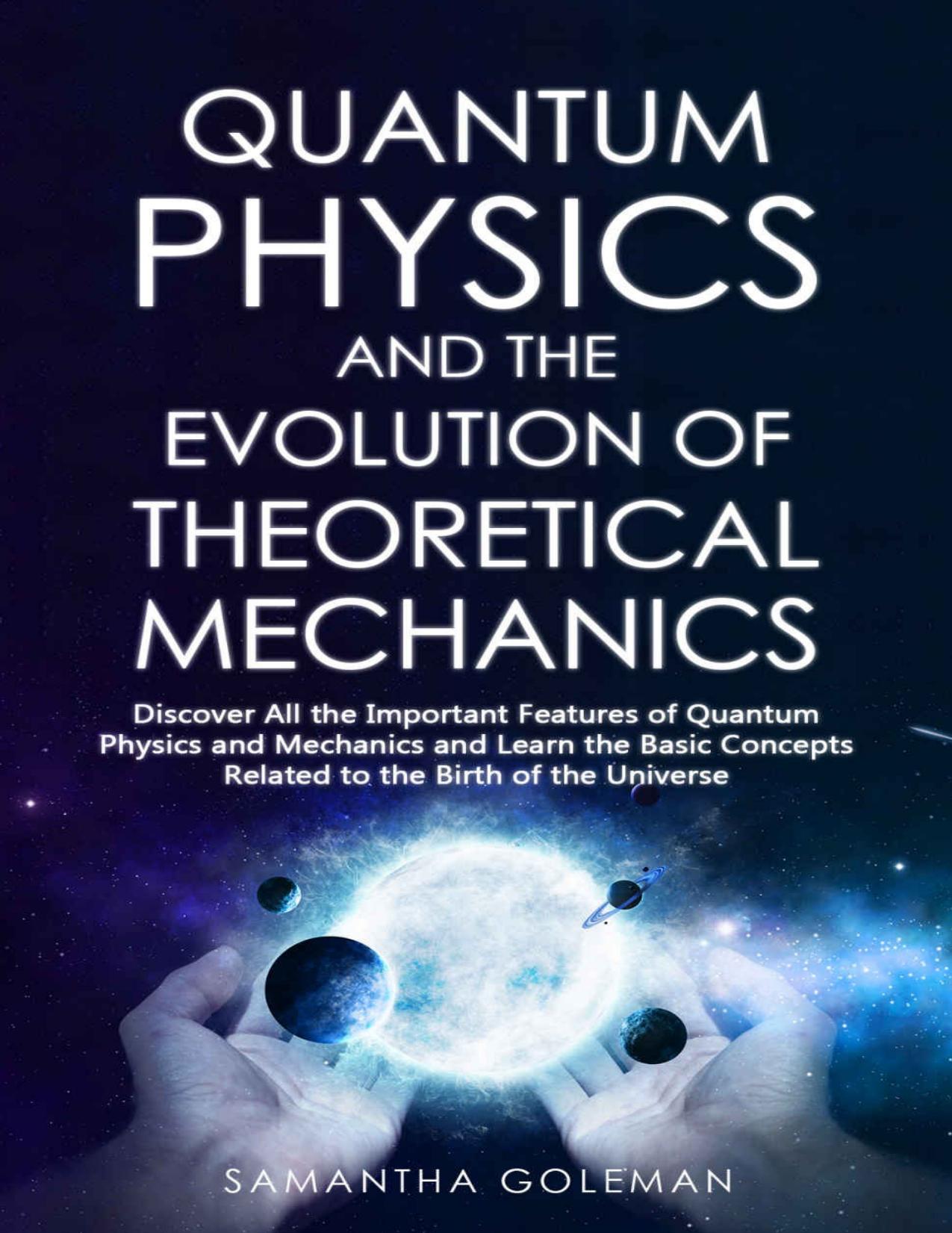Quantum Physics and the Evolution of Theoretical Mechanics: Discover All the Important Features of Quantum Physics and Mechanics and Learn the Basic Concepts Related to the Birth of the Universe by Samantha Goleman

Author:Samantha Goleman [Goleman, Samantha]
Language: eng
Format: mobi, azw3, epub, pdf
Published: 2021-05-08T16:00:00+00:00
The EPR Paradox
The EPR Paradox, or the Einstein-Podolsky-Rosen Paradox, seeks to explain the contradictory variables of the positions of the Copenhagen Interpretation. When the state of one particle becomes true, so does the other because their states are entangled.
Why, then, is there a paradox? The paradox is the fact that although I told you there could be no communication between the particles in an entangled state, apparently there is. However, communication is not what scientists are seeing but rather correlation, or even better, entanglement. The particles, when matching each otherâs state, seem to communicate because they are entangled. They reach each otherâs condition at a speed that is faster than the speed of light, which conflicts with Einsteinâs theory of relativity (Zimmerman Jones, 2019).
It is simple to jump to the conclusion that proposing this paradox supports the theory of entanglement. However, my intentions are quite contrary. I present the paradox to enrich your historical understanding of quantum physics and have a grasp of the debates that ensued before the theory could have any proof whatsoever.
I have not yet mentioned that Einstein coined this theory because he did not believe in the entanglement theory. He did not try to disprove it, but instead, he tried to show that physics laws, one of them being the theory of relativity, could not coexist with quantum mechanics. This paradox was Einstein and his colleague Bohmâs way of saying that quantum entanglement works, but not according to relativity theory. This conclusion could suggest a few different possibilities: either the theory of relativity could be faulty, or the two other ideas just did not belong in the same context. The latter turned out to be accurate; relativity theory has more of a place in the classical world than the quantum one.
Why does the theory of relativity pose so many problems with quantum physics? Generally speaking, relativity theory describes âcontinuous and deterministicâ (Powell, 2015). Quantum physics is a completely different animal; its events happen in astonishing âquantum leaps,â with probable, not deterministic outcomes. As you can see, the two do not and cannot match. However, we can try to see their confluence. We will find out how they overlap at the end of the day because they do. After all, we live in one, not two worlds. We just see it in two ways currently.
One theory combines the ideas of relativity and quantum entanglement, and it is called the pixel metaphor. Named after that weird thing that happens when you examine a television screen up-close, the pixel metaphor seeks to apply a two-dimensional theory to the world. This makes a lot of sense if you think about it. Quantum theory, explaining the world of tiny things, and classical theory, explaining the large stuff, can only coexist if the big world is composed of small, small items (particles). This theory still lacks those hidden variables, however. The way forward is a theory that accurately combines the two approaches into one idea about the whole world as one colossal system.
Download
Quantum Physics and the Evolution of Theoretical Mechanics: Discover All the Important Features of Quantum Physics and Mechanics and Learn the Basic Concepts Related to the Birth of the Universe by Samantha Goleman.azw3
Quantum Physics and the Evolution of Theoretical Mechanics: Discover All the Important Features of Quantum Physics and Mechanics and Learn the Basic Concepts Related to the Birth of the Universe by Samantha Goleman.epub
Quantum Physics and the Evolution of Theoretical Mechanics: Discover All the Important Features of Quantum Physics and Mechanics and Learn the Basic Concepts Related to the Birth of the Universe by Samantha Goleman.pdf
This site does not store any files on its server. We only index and link to content provided by other sites. Please contact the content providers to delete copyright contents if any and email us, we'll remove relevant links or contents immediately.
The Complete Stick Figure Physics Tutorials by Allen Sarah(7097)
Secrets of Antigravity Propulsion: Tesla, UFOs, and Classified Aerospace Technology by Ph.D. Paul A. Laviolette(4860)
Thing Explainer by Randall Munroe(3752)
The River of Consciousness by Oliver Sacks(3384)
The Order of Time by Carlo Rovelli(3052)
How To by Randall Munroe(2893)
I Live in the Future & Here's How It Works by Nick Bilton(2817)
A Brief History of Time by Stephen Hawking(2795)
What If?: Serious Scientific Answers to Absurd Hypothetical Questions by Randall Munroe(2527)
The Great Unknown by Marcus du Sautoy(2516)
Midnight in Chernobyl by Adam Higginbotham(2364)
Blockchain: Ultimate Step By Step Guide To Understanding Blockchain Technology, Bitcoin Creation, and the future of Money (Novice to Expert) by Keizer Söze(2362)
Networks: An Introduction by Newman Mark(2242)
The Meaning of it All by Richard Feynman(2191)
Easy Electronics by Charles Platt(2185)
The Tao of Physics by Fritjof Capra(2149)
Midnight in Chernobyl: The Untold Story of the World's Greatest Nuclear Disaster by Adam Higginbotham(2056)
When by Daniel H Pink(2007)
Introducing Relativity by Bruce Bassett(2000)
